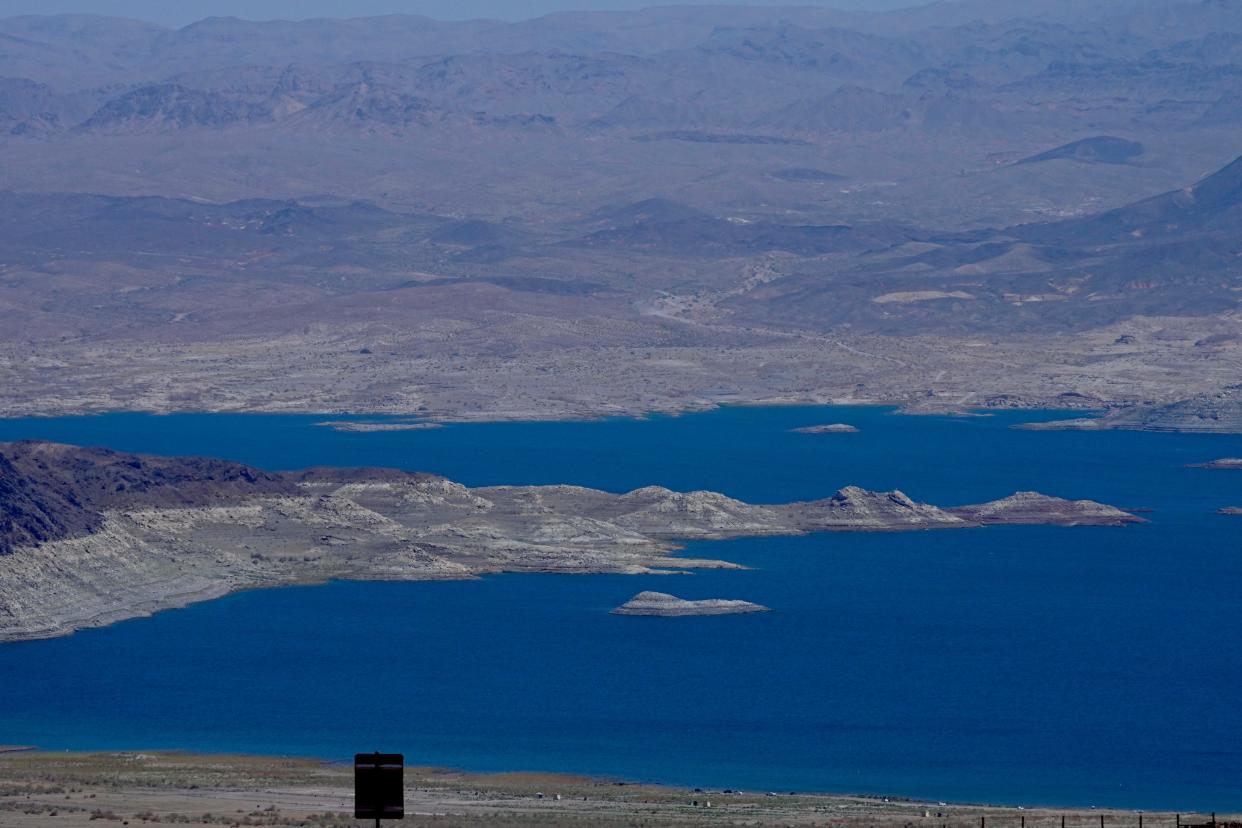Lake Mead has a 1-in-4 chance of going low again by 2026, if we don't do more now

Now that we’re knee-deep in the long-term process to save the Colorado River, almost no one is asking whether we’ve done enough to stabilize it for the next few years.
A wet winter and billions of dollars in funding already solved that problem, right?
Well, in theory.
The federal Bureau of Reclamation has released Take 2 on a separate but related effort to decide how we keep Lake Mead and Lake Powell — the nation’s largest reservoirs — from reaching dangerously low levels in the short term.
Mandatory cuts are off the table
The feds decided to take emergency action last year, when forecasts put Lake Mead on a rapid descent toward “dead pool,” a worst-case scenario that would have almost completely cut off users downstream.
Reclamation had offered two alternatives to shore up the lake by doling out mandatory water cuts through 2026, when its current operating rules expire.
But both were painful and all but guaranteed to touch off a lengthy and bitter court battle.
Then in May, the states that rely on Lake Mead (Arizona, California and Nevada) came up with a third option, which mostly relies on paying people not to use water.
Reclamation paused work on its two alternatives to compare this third option and last week found (as expected) that it would essentially do what the other two had intended.
How long will the states' plan last?
The feds have officially taken the two mandatory options off the table, leaving the choice now between taking no additional action or going along with the states’ solution, which would voluntarily save 3 million acre-feet of water in Lake Mead by 2026.
That’s enough to cover the city of Phoenix in about 9 feet of water. Given how much good that could do in the lake, I’m sure you can guess which option the feds will choose.
Half of those savings are expected to come by the end of 2024, and roughly three-quarters are expected to be compensated using federal money earmarked in the Inflation Reduction Act.
But notice that I said “expected.”
We only got two years out of the Drought Contingency Plan until we realized in 2021 that it wasn’t aggressive enough to stop the drain on Lake Mead.
The 500-plus plan and subsequent efforts to leave more water in the lake only lasted a few months.
We're not done saving Lake Mead
The states’ latest solution could reduce the chances of Lake Mead tanking by 2026 to single digits, according to Reclamation’s modeling.
But only if more users — including key farming interests in California and Arizona — join this effort in time to make a difference.
The no-action alternative models what happens if we stop with the finalized agreements we have now, which conserve a little less than a third of the water needed.
Under this scenario, Lake Mead still has nearly a 1-in-4 chance of falling below 1,025 feet of elevation in 2026.
That’s important, because if the lake is forecast to dip below that level in a key mid-water year assessment, states would only have 45 days to decide what else they’ll do to protect the lake.
And if past is prologue, guess who will likely end up shouldering the brunt of those actions?
Water users in Arizona, which so far in this latest effort, have agreed to leave the largest share of water in Lake Mead.
As important as it is to set our sights on the future, work remains to better insulate the lake from a short-term crash.
Reclamation needs to finalize more agreements with more users for more water.
If we fall short, it’s a disservice not only to the 40 million folks who rely on the Colorado River, but to the millions more taxpaying Americans who helped fund this deal.
Reach Allhands at joanna.allhands@arizonarepublic.com. On X, formerly Twitter: @joannaallhands.
If you love this content (or love to hate it – hey, I won't judge), why not subscribe to get more?
This article originally appeared on Arizona Republic: Lake Mead has a 1-in-4 chance of going low again, if we don't do more

